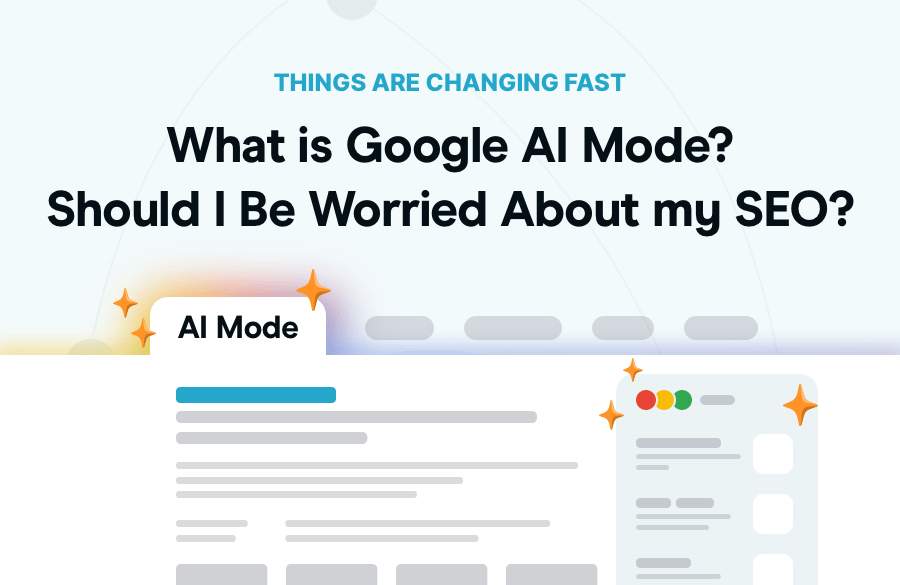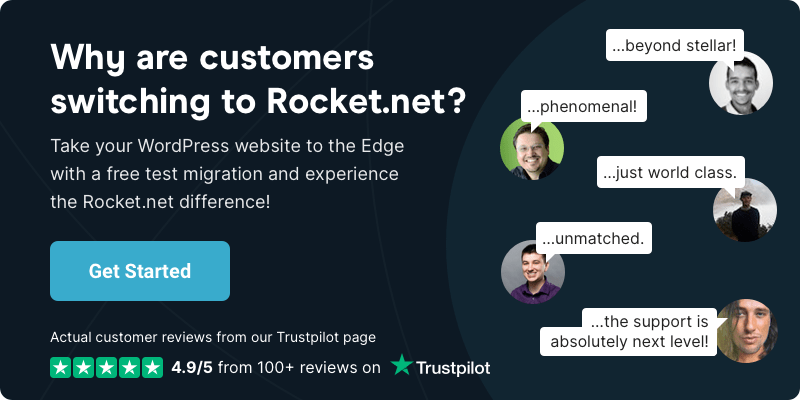
10 Off-Page SEO Strategies That (Still) Work
- •
- 5 min read

Google just changed the rules – again. This time, it’s not an algorithm tweak; it’s a whole new experience.
Google AI Mode is the latest evolution of search — powered by Gemini — that gives you full, synthesized answers instead of a list of blue links. “… it is Google’s direct response to the release of search engines … like OpenAI and Perplexity, which provide chatbot-style answers to questions and queries.”
WIRED
Helpful? Definitely. But for SEOs and content creators, it’s causing some serious concern.
So. Should you be worried? Probably not. Let’s break it down.
Google AI Mode is a conversational, AI-powered interface that’s starting to replace traditional search results for many users. It’s currently available to Google One AI Premium subscribers in the U.S., and it’s shaping the future of how people interact with search.
Here’s what makes it different:
But here’s the catch: click-through rates (CTR) are dropping. Fast. Some studies show a whopping 60% decline in organic traffic on queries that trigger AI Mode.
That’s why SEOs are watching closely.
Heads up: Until recently, traffic from AI Mode was being misattributed as “direct” in Google Analytics. Google patched this in late May 2025, so your analytics might look weird for a bit.
Now, you’ll start seeing AI Mode traffic show up as organic, and Google Search Console is rolling out new AI Mode-specific data. If you’re not tracking these new metrics, you’re already behind.
AI Mode doesn’t just answer questions – it can do things for users: book tickets, compare products, even plan your weekend. This “agentic search” means users might never hit your site at all.
If your business relies on conversions from visitors, it’s time to rethink your funnel.
Google AI Mode taps into Google Lens and other tools to answer queries with images, not just text. Users can snap a photo of a product or a landmark and get AI-powered answers or recommendations instantly.
If your images aren’t optimized with structured data, alt text, and schema, you’re invisible to this new wave of search.
AI Mode uses advanced embeddings and real-time behavior to personalize results. Two people searching the same thing might see totally different answers. Your “rank” is now fluid, and your authority and brand trust matter more than ever. E-E-A-T (Experience, Expertise, Authoritativeness, Trustworthiness) isn’t just a buzzword – it’s how you get cited.
AI Mode cherry-picks the best, most extractable passages kind of like how reporters look for soundbites. Generic, fluffy, or poorly organized content? You’re out. Data-backed, original, and clearly structured? That’s what gets surfaced and cited. You know, like well-written FAQ pages.
Right now, AI Mode is opt-in and mostly for U.S. Google One AI Premium users. But Google’s expanding access quickly. Early adopters have a massive edge – and this is going to be everywhere, soon.
We’ve been through zero-click searches, featured snippets, and voice search. But this is bigger.
AI Mode is changing:
And here’s the wild part: results are personalized using AI embeddings. In other words, your “rank” might not even be the same from one person to another. Traditional ranking reports can’t keep up.
But it’s not all bad news.
“Sites that were previously buried on Page 2 of Google now have a fighting chance through evaluating AI output content, topics, and citations – and revamping their content to better compete.”
Search Engine Land
At Rocket.net, we’re leaning into this new search behavior – not running from it.
Here’s how:
Bottom line? You can absolutely win in this new AI search landscape — but you need to play by different rules.
“AI can free you up to focus on strategic planning and higher-level tasks while automating the more mundane aspects of content generation, but you still need to take an active part in the process.”
Rocket.net – Still Thinking About Using AI Content on Your Website?
Here’s your actionable checklist to get ahead — and stay ahead:
1. Chunk your content
Use H2s/H3s, bullet points, and short sections. AI Mode pulls specific passages — not whole pages.
2. Cover the “fan-out”
Add FAQs and subtopics your reader (and Google) might ask next.
3. Use structured data
Add HowTo, FAQ, Article schema — anything that helps Google understand what your page delivers.
4. Create multimodal content
Embed short videos, diagrams, or podcasts. AI Mode favors multiple content types.
5. Get cited beyond your site
Build brand mentions and backlinks on forums, YouTube, directories, and trusted sites. AI Mode pulls from across the web. Off-Page SEO for the win!
6. Monitor performance
Watch your CTR and impressions in Search Console. Drops may signal your content is being replaced by an AI summary. And keep an eye on new “AI Mode” traffic metrics as Google rolls them out.
7. Think brand-first
AI uses brand signals, authorship, and authority. Build a strong presence everywhere – LinkedIn and Medium to name just two. Do not just post on your blog.
8. Optimize your images and visuals
Add alt text, structured image data, and visual schema. AI Mode is using visual search more than ever.
“If you plan to chunk your content for SEO, you need a two-pronged approach. Your content structure must be similar for featured snippets and AI search citations, but it will differ based on goals and presentation.”
Rocket.net – Why Content Chunking For Ranking AI Overviews Makes Sense
Yes, you should be worried about Google AI Mode if you keep doing SEO the old way.
Google AI Mode isn’t here to destroy traditional SEO tactics. But it is here to challenge everything we thought we knew about it. Content must now serve users and machines, be modular, and work across multiple formats.
If you adapt now, you’ll be ahead of your competition. Remember: Speed wins.
If not? Don’t be surprised if your traffic keeps dropping – even if your rankings look “fine.”
AI Mode is a massive shift. But just like featured snippets and Core Web Vitals, those who embrace the change will win.
If you’re publishing high-quality content, using structured data, building brand trust, and thinking about how AI understands your site, you’re already ahead of the curve.
The future of SEO isn’t dead; it’s just gotten smarter.
And so have you.
Grow your business with lightning-fast, secure, and optimized websites that are easy to set up & manage. Top-tier agencies and online businesses choose Rocket.net as their trusted managed WordPress hosting provider – why shouldn’t you, too?
